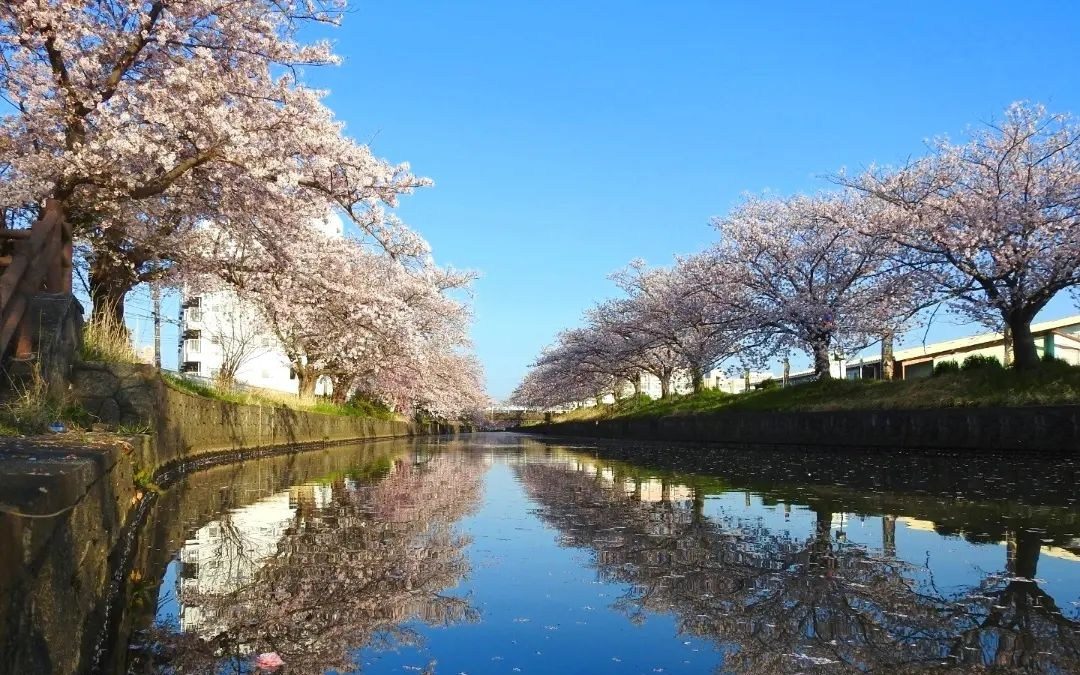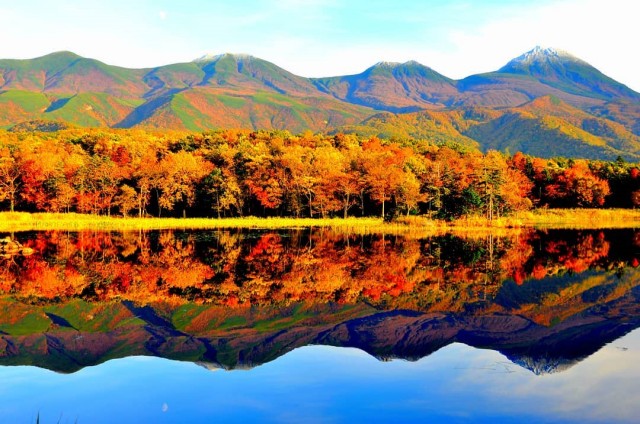"Mount Osore" is one of Japan's three sacred mountains, and it stands as the most renowned attraction in Aomori Prefecture. It features rugged, stony terrain and flowing rivers.
Despite its enigmatic appearance, did you know that this place conceals a beautiful paradise? No matter how you look at it, the surroundings outside of the hellish landscape do not resemble hell at all. It is a remarkably beautiful place, almost reminiscent of paradise.
At "Mount Osore," you can partake in a unique experience that allows you to simultaneously embrace both heaven and hell.
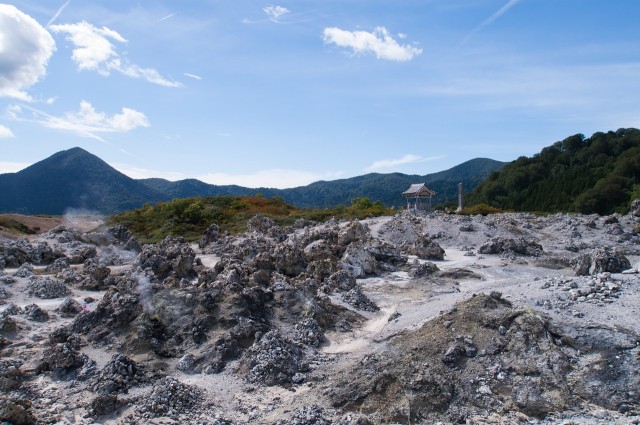
What is the identity of Mount Osore, one of the three sacred mountains of Japan?
Mount Osore, along with Mount Hieizan and Mount Koyasan, is renowned as one of Japan's three major sacred mountains. The "Mount Osore Holy Ground / Mount Osore Bodai-ji Temple" is acclaimed as one of Japan's foremost energy sites. Located at the heart of the northernmost part of the Honshu Island, it has long been regarded as a place where the souls of the departed gather, as the locals say, "The souls of the dead congregate at Mount Osore."
The name "Mount Osore" does not refer to the mountain itself but designates the entire outer rim of the volcano centered around the volcanic caldera lake, "Lake Usoriyama."
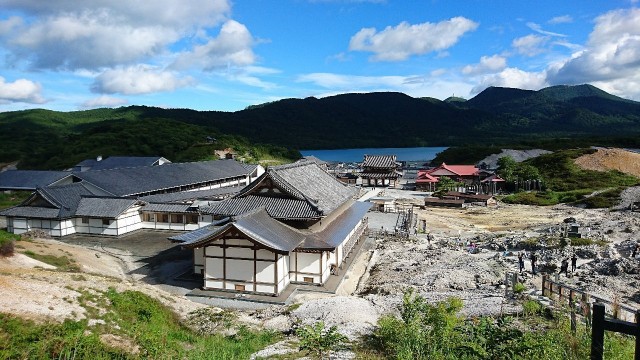
The presence of the volcanic caldera lake indicates that its topography was shaped by volcanic activity. Despite being an active volcano, it is believed to have erupted over ten thousand years ago, so there is no need to be concerned about current volcanic activity.
Mount Osore Bodai-ji Temple is situated on the shores of Lake Usoriyama and was founded by the venerable master Ennin approximately 1,200 years ago.
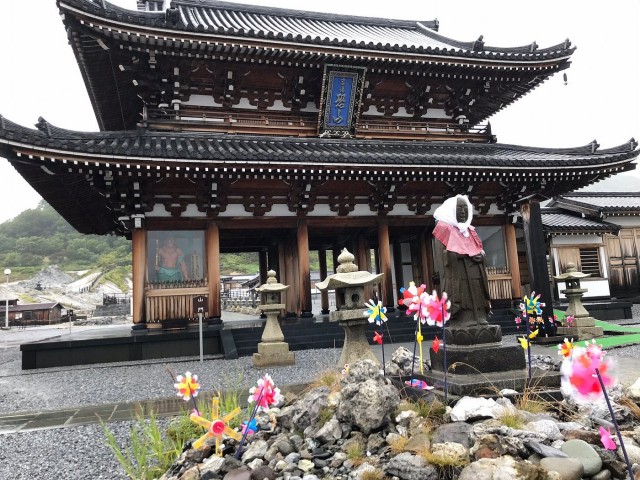
Locals have long believed that after death, people go to Mount Osore. The sacred grounds are enveloped by the outer rim of the volcano, making it an isolated place that remains unseen from the outside.
As you cross the arched bridge over the River Sanzu and enter the sacred area, the scenery that unfolds before you will transport you to an otherworldly realm. It evokes images of the Pure Land's blissful shore, the sulfurous Hell Valley, the desolate Infinite Hell, the Marsh Pond Hell, and more. Along the Nishi-no-Harakawa, there are stones piled by parents in remembrance of their departed children and spinning windmills.
Mount Osore has been steeped in mysterious legends and phenomena since ancient times, including its designation as the "boundary between the otherworld and the earthly realm" and the presence of the "tide."
Is the landscape genuinely infernal in nature?
The reason Mount Osore is referred to as "hell" is due to its landscape. Although it is called a mountain, it is not a lush, green mountain covered in trees; instead, it is a desolate rocky expanse with rolling stones.
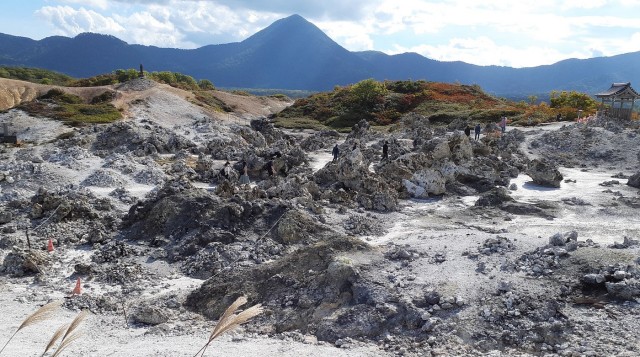
The ashen landscape created by the volcano indeed resembles a scene from the apocalypse, leading some to claim that there is hell around Mount Osore.
The air, heavy and suffocating, sets it apart, and the scenery before you stands in stark contrast to that of ordinary mountains.
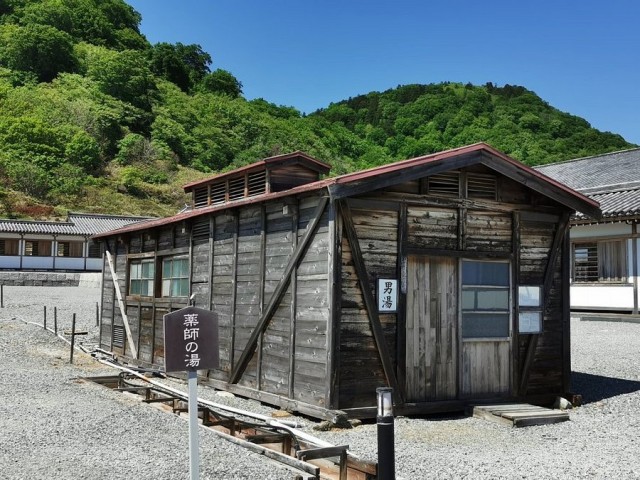
Furthermore, due to the presence of hot springs around the mountain, there are four hot spring huts within the sacred grounds where you can bathe for free. However, please be aware that there are mixed-gender baths in this area.
Cross the red bridge, spanning the River Sanzu.
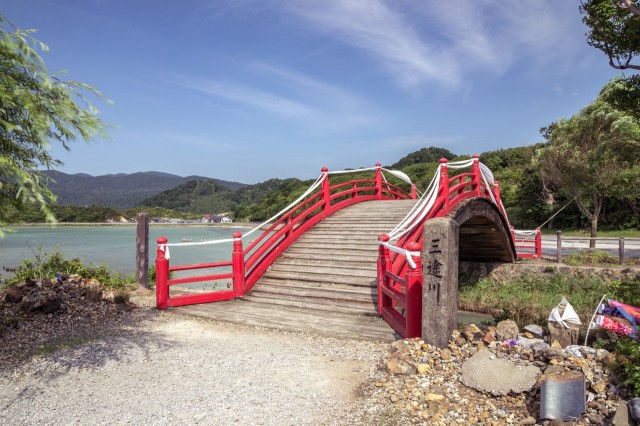
As you progress from the parking area towards Mount Osore, the scent of sulfur grows stronger. The first sights that greet you are the River Sanzu and the Red Taiko Bridge.
The river flowing beside Mount Osore, originally known as the Kiyotake River, is referred to in Japanese folklore as the River of the Underworld. It is believed that once one crosses this river, they enter another realm. Thus, this arched bridge is considered the boundary between this world and another.

Along the banks of the River Sanzu stand statues said to represent "Datsueba" and "Keneo," who, according to legend, greet the departed as they cross the river. It is said that by stripping away the clothing of the deceased, one can witness the profound sins they committed during their lifetime.
When you visit in person, you'll undoubtedly feel your spine straighten with an eerie sensation.
A journey through 108 hells
"Hell" is a singular term, but the number of hells is not confined to just one. Mount Osore boasts 108 hells, with each hell accompanied by an easily comprehensible signboard.
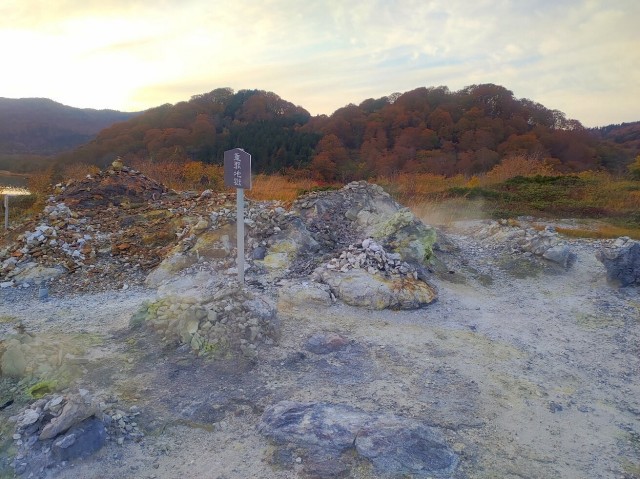
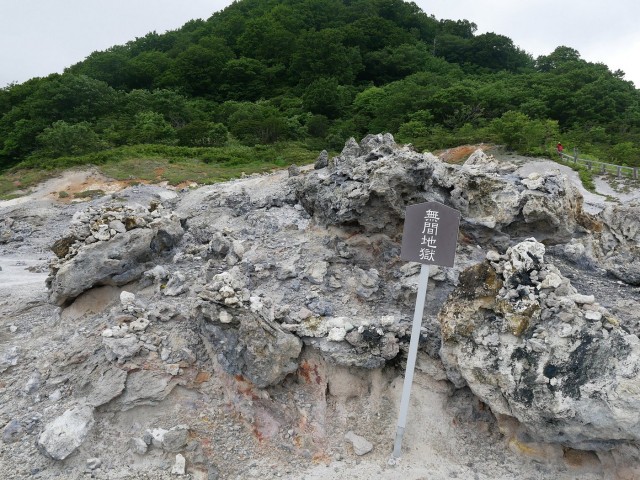
You might be surprised that in Buddhism, there are eighteen hells, but at Mount Osore, there are 108 different hells. Touring these 108 hells is known as the "Hell Pilgrimage" and is one of the highlights of visiting Mount Osore.
During the Hell Pilgrimage, you can witness areas where smoke rises from between the rocks. This is sulfur smoke, but there are warning signs nearby advising against inhaling it directly.
The Blissful Shore beyond the journey through hell
Upon passing through the rocky terrain, a beautiful lakeside landscape unfolds before your eyes. This is the "Blissful Shore" or "Gokuraku-hama."
No matter how you look at it, it doesn't resemble the infernal landscape; rather, it's akin to a serene journey through a lake in the midst of a lush forest. Before you lies clear lake water and pristine sandy shores, while turning around allows you to appreciate the rugged rocky terrain.
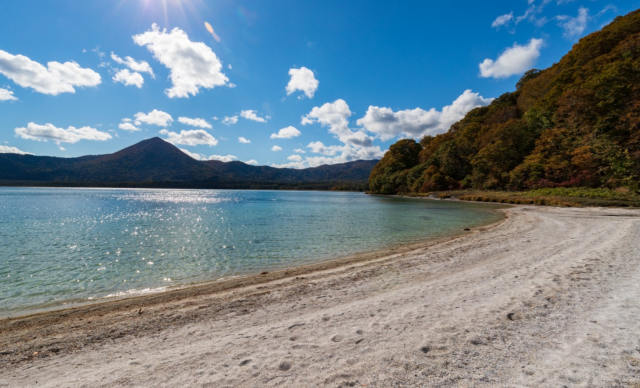
Lake Usoriyama is a volcanic caldera lake known for its striking deep blue surface. It boasts exceptional clarity, and on sunny days, the white sandy shores make you feel as if you've arrived at a tropical beach.
It's such a picturesque lake that even with sunshades on this beach, there's no sense of incongruity.
By the way, the name "Usoriyama" is said to have its origins in the Ainu language. It's believed to be derived from the Ainu word "ウショロ," meaning "hollow."
A lake where most organisms would find it difficult to survive
Lake Usoriyama offers a picturesque, serene landscape with a calm surface and high transparency.
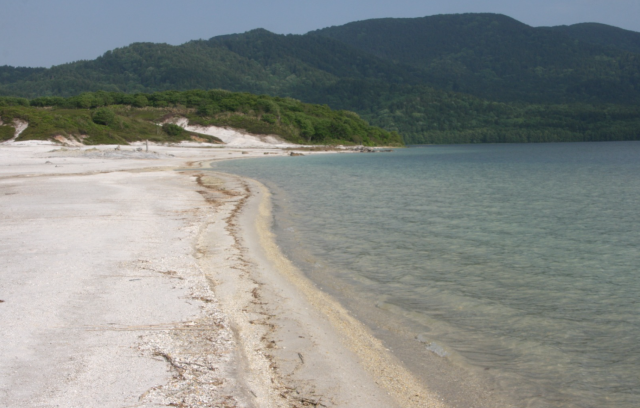
The pH level of Lake Usoriyama's water is at 3.5, is considered an exceptional value in the natural world. It's akin to vinegar, making it an environment where most common organisms cannot survive.
However, some fish have evolved to thrive in this extreme environment. This is the fish known as "ウグイ (the Japanese dace)" or "Osore-ugui (Osore dace)." It is the only fish that has adapted to the harsh conditions of Lake Usoriyama.
Even if it's the same Osore dace, it's said that those brought from elsewhere would quickly perish. Quite peculiar, isn't it?
As you approach the lake, you can observe the Osore dace living in one of the world's most acidic bodies of water.
Observing the Blissful Shore from the lookout point
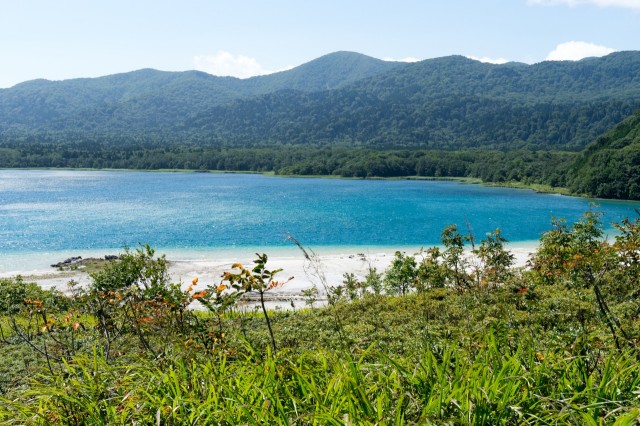
Strolling along the Blissful Shore, you'll pass the East Japan Earthquake Memorial Tower and proceed to the lookout point with a view of the beach.
A few minutes' walk from the beach, the Gochi Mountain Observatory offers a splendid panoramic view. From here, you can overlook Lake Usoriyama and the surrounding area of Mount Osore.
Inside the observatory, there's a statue of the Five Wisdom Buddha, allowing you to simultaneously glimpse both hell and heaven. When admiring the view, begin by clasping your hands together in reverence.
Mount Osore, where you can simultaneously witness both hell and heaven
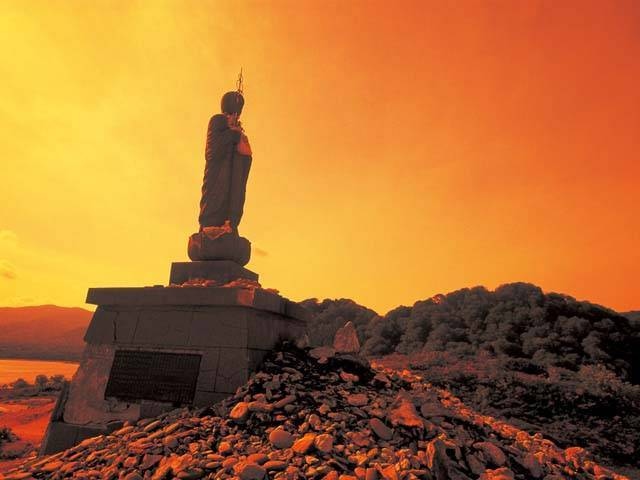
Japanese people consider Mount Osore and Mount Osore Bodai-ji Temple to be one of the three major sacred places in Japan that one should visit at least once in a lifetime.
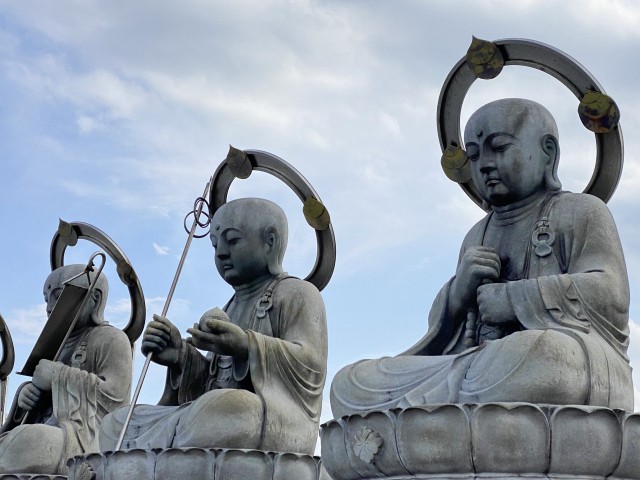
Mount Osore may have some mysterious imagery in various depictions, but it is indeed a unique place where you can witness scenes reminiscent of both hell and heaven.
The Osore Festival takes place from July 20th to 24th each year, and there is an annual autumn pilgrimage event on the 10th day of the first month. Please be mindful of closing hours when visiting.
- Mount Osore Bodai-ji Temple Information
- Address: 3-2 Usoyama, Tadano, Mutsu City, Aomori Google Map
- Access: Take the JR "Shimokita Station" and then the "Osore Line" bus for approximately 43 minutes Bus Schedules
- Opening Hours: May 1st to October 31st, daily from 6:00 AM to 6:00 PM
- Admission: Adults: 500 yen, Elementary and Middle School Students: 200 yen
- Phone: 0175-22-3825
- Official Website: 青森県観光情報サイト
- Mutsu City Hotels: Booking.com | Agoda.com | Hotels.com



